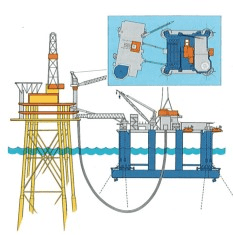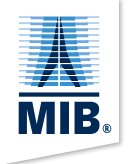EMERGENCY RELEASE SYSTEMS FOR TENDER ASSISTED DRILLING
ERS for TAD
In attempts to limit the huge costs involved in fixed offshore production platforms, major operators looked in depth at the life of field requirements in an endeavour to reduce and optimise deck load, jacket weight, size and structure, etc.
One issue facing new projects in the oil price slump of the late 1990s was the need to perform additional development drilling and workovers once a fixed jacket was installed in-situ offshore. This would normally mean the need to install all equipment needed for drilling on day 1 adding significantly to platform cost and complexity – albeit for a limited period compared to the overall life expectancy of the entire facility.
The offshore production majors together with the drilling contractors devised a meaning of providing all these temporary drilling requirements and services by introducing Tender Assisted Drilling (TAD) packages.
Used previously utilising small barges in more benign environments the concept was not new, but now they were looking at the TAD for larger projects in hostile environments such as the UK & Norwegian North Seas. A totally different challenger was being faced.
The solutions developed involved the conversion of existing semi-submersible drilling platforms moored in close proximity to lightweight production jackets, with the semi-subs providing the additional resources to allow for short term drilling operations. See below for a typical example taken from Shell’s UKNS Gannet field development.
The main concern with the overall concept was the limited distances possible between the two structures and safety issues presented as a result.
The drilling mud, water, cement and power lines between the two were provided by catenary flexibles with diameters from 3” to 10” and design pressures in excess of 5,000 psig in many cases.
With very carefully and much model tested anchoring patterns and spreads, the main outstanding issue was with the ‘drift off’ of the semi under extreme conditions. It was established that in a One Year Storm condition and/or wave heights reaching 100 metres that the semi subs would be winched back from a 30 metres gap to a 100 metres safe distance and still remain connected and potentially operable. Beyond that a quick and reliable means of isolating the flexibles and releasing them from the semi sub was needed.
MIB developed simple but extremely effective Emergency Release Systems in various diameters and pressures to meet this need. Installed on the flexible line hang-off balcony they could be the simple press of a button separate and safely release all flexibles into the sea in seconds thus avoiding the potential risks to crew, equipment or the environment.
An example that can be considered fairly typical of a TAD installation could be Shell Exploration and Production’s UKNS Gannet Field.
Utilising the Sedco 704 existing drilling semi sub all necessary equipment for mud, cement, water, chemical mixing and storage, the generators for the extra power needed, tubular storage and accommodation for an extra 100 personnel could be provided. This had the impact of reducing the operation deck load on the gannet jacket by over 5,500 tonnes.
The jacket was installed with only the shale shakers and degassers prior to the drilling mud being pumped back to the Sedco rig for further processing and disposal.
A knock on effect was that the much lighter weight jacket could now be fabricated as a single structure, capable of being installed on the field in a single lift instead of the traditional multi-module approach needed for heavier platforms. The cost and time saving s are easily recognised under such conditions.
The Sedco 704 was moved into position in late 1992 and used for TAD for almost 3 years before moving to a new oil field development.

Scheme of a TAD lay-out configuration.
